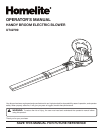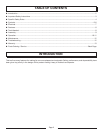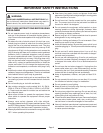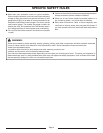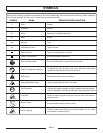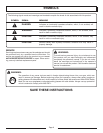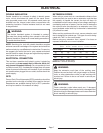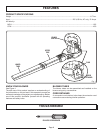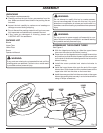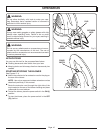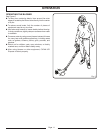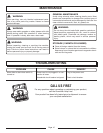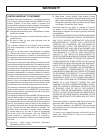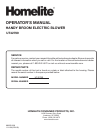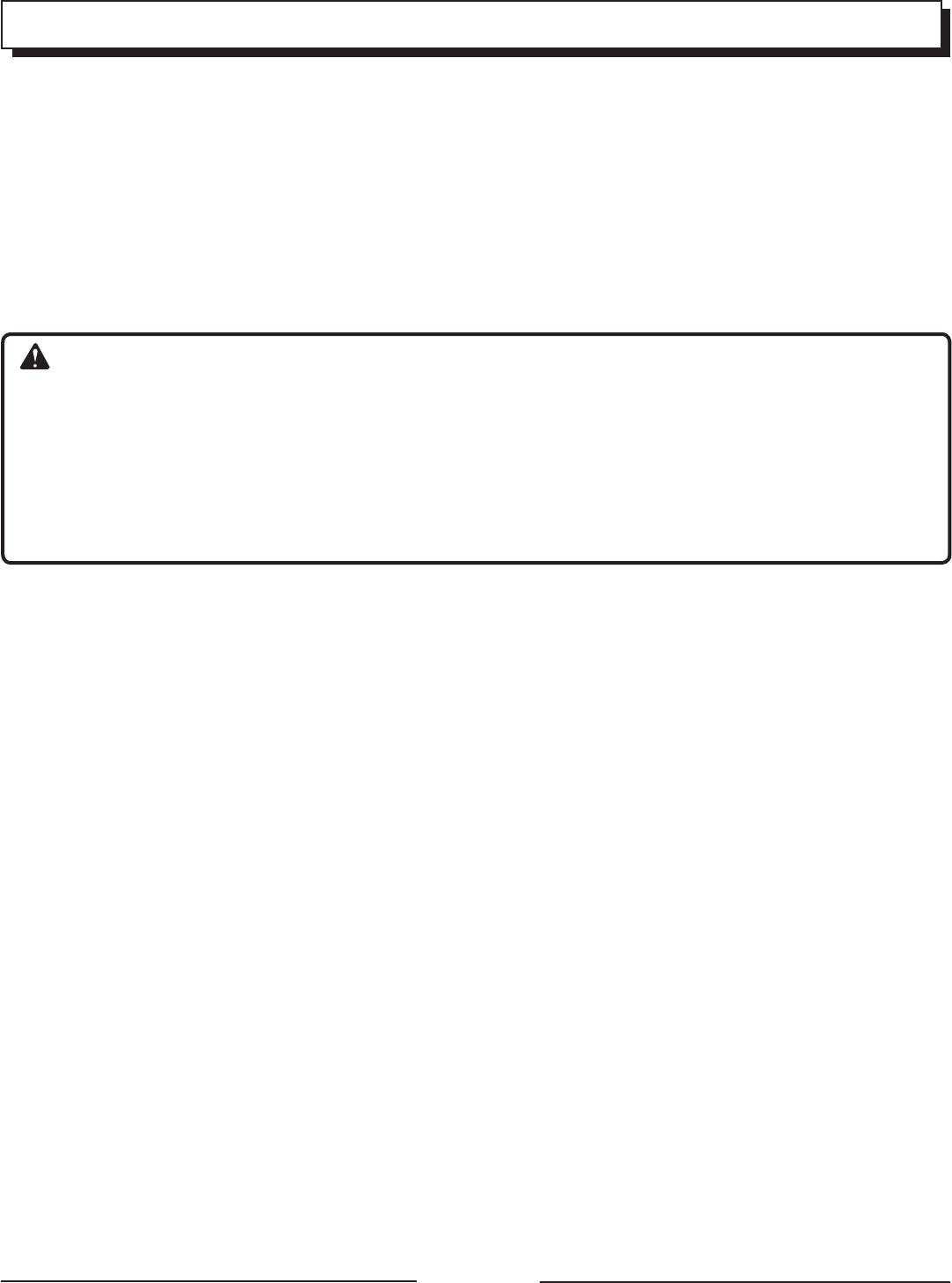
Page 4
WARNING:
Some dust created by power sanding, sawing, grinding, drilling, and other construction activities contains chemicals
known to cause cancer, birth defects or other reproductive harm. Some examples of these chemicals are:
• lead from lead-based paints,
• crystalline silica from bricks and cement and other masonry products, and
• arsenic and chromium from chemically-treated lumber.
Your risk from these exposures varies, depending on how often you do this type of work. To reduce your exposure to
these chemicals: work in a well ventilated area, and work with approved safety equipment, such as those dust masks
that are specially designed to filter out microscopic particles.
Make sure your extension cord is in good condition.
When using an extension cord, be sure to use one heavy
enough to carry the current your product will draw. A wire
gauge size (A.W.G.) of at least 14 is recommended for an
extension cord 50 feet or less in length. If in doubt, use the
next heavier gauge. The smaller the gauge number, the
heavier the cord. An undersized cord will cause a drop in
line voltage resulting in loss of power and overheating.
� Do not point the blower nozzle in the direction of people
or pets.
SPECIFIC SAFETY RULES
Never run the unit without the proper equipment attached.
Always ensure the blower tubes are installed.
When not in use, blower should be stored indoors in a
dry, locked up place—out of the reach of children.
Save these instructions. Refer to them frequently and
use them to instruct others who may use this blower. If
you loan someone this unit, loan them these instructions
also.



